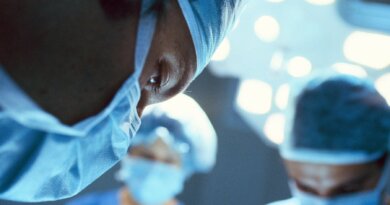Procedures in Known/Suspected COVID-19 Guidelines (2020)
[ad_1]
What your doctor is reading on Medscape.com:
APRIL 07, 2020 —The guidelines on performing procedures in patients with known or suspected COVID-19 were released on March 20, 2020, by the American Society of Anesthesiologists (ASA).[1]
Performance of Procedures on Patients With Known or Suspected COVID-19
The patient should not be brought to the holding or postanesthesia care unit (PACU) areas. A designated operating room (OR) should be allocated and signs posted on the doors to minimize staff exposure.
If general anesthesia is not required, the patient should continue to wear the surgical mask.
If general anesthesia is used, the following apply:
-
A high-efficiency particulate air (HEPA) filter should be placed between the Y-piece of the breathing circuit and the patient’s mask, endotracheal tube, or laryngeal mask airway.
-
Alternatively, for pediatric patients or other patients in whom the additional dead space or weight of the filter may be problematic, the HEPA filter should be placed on the expiratory end of the corrugated breathing circuit before expired gas enters the anesthesia machine.
-
The gas sampling tubing should also be protected by a HEPA filter, and gases exiting the gas analyzer should be scavenged and not allowed to return to the room air.
During laryngoscopy and intubation, the following apply:
-
Double gloves should be used; the outer gloves can be shed after intubation, thus minimizing subsequent environmental contamination.
-
In each location where intubations take place, intubation should be performed by the most experienced professional for that location. In the OR, this should be the most experienced anesthesia professional available. In non-OR locations, including the emergency department (ED) and the intensive care unit (ICU), this should be an emergency medicine, critical care medicine, or anesthesia professional, depending on availability and staffing. Every facility should develop a protocol for determining which medical service responds to the need for non-OR intubations.
-
Awake fiberoptic intubation should be avoided unless specifically indicated. Droplets containing viral pathogens may become aerosolized during this procedure; aerosolization generates smaller liquid particles that may become suspended in air currents, traverse filtration barriers, and be inspired.
-
A rapid sequence induction (RSI) should be considered in order to avoid manual ventilation of the patient’s lungs and potential aerosolization. If manual ventilation is required, small tidal volumes should be applied.
- After protective equipment is removed, efforts should be made to avoid touching the hair or face and to perform hand hygiene.
Continued
If available, a closed suction system should be used during airway suctioning. Such systems may only be available in the critical care setting.
Disposable covers (eg, plastic sheets for surfaces, long ultrasound probe sheath covers) should be considered in order to reduce droplet and contact contamination of equipment and other environmental surfaces.
The patient should be recovered in the OR or transferred to an airborne infection isolation room.
After the patient has departed from the OR, as much time as possible should be left before subsequent patient care (for the removal of airborne infectious contamination). The length of time depends on the number of air exchanges per hour in the specific room or space. More detailed guidance is available from the Centers for Disease Control and Prevention (CDC).[2]
After the case, high-touch surfaces on the anesthesia machine and the anesthesia work area should be cleaned and disinfected with an Environmental Protection Agency (EPA)-approved hospital disinfectant.
If devices such as point-of-care ultrasound machines are used, the following apply:
-
A long sheath cover should be used with the ultrasound unit and cable to minimize contamination of the equipment.
-
Nonessential parts of the ultrasound cart may best be covered with drapes to minimize droplet exposure.
[ad_2]
Source link




ed treatment pills https://edpills.tech/# medication for ed
natural remedies for ed buy erection pills ed pills gnc edpills.tech